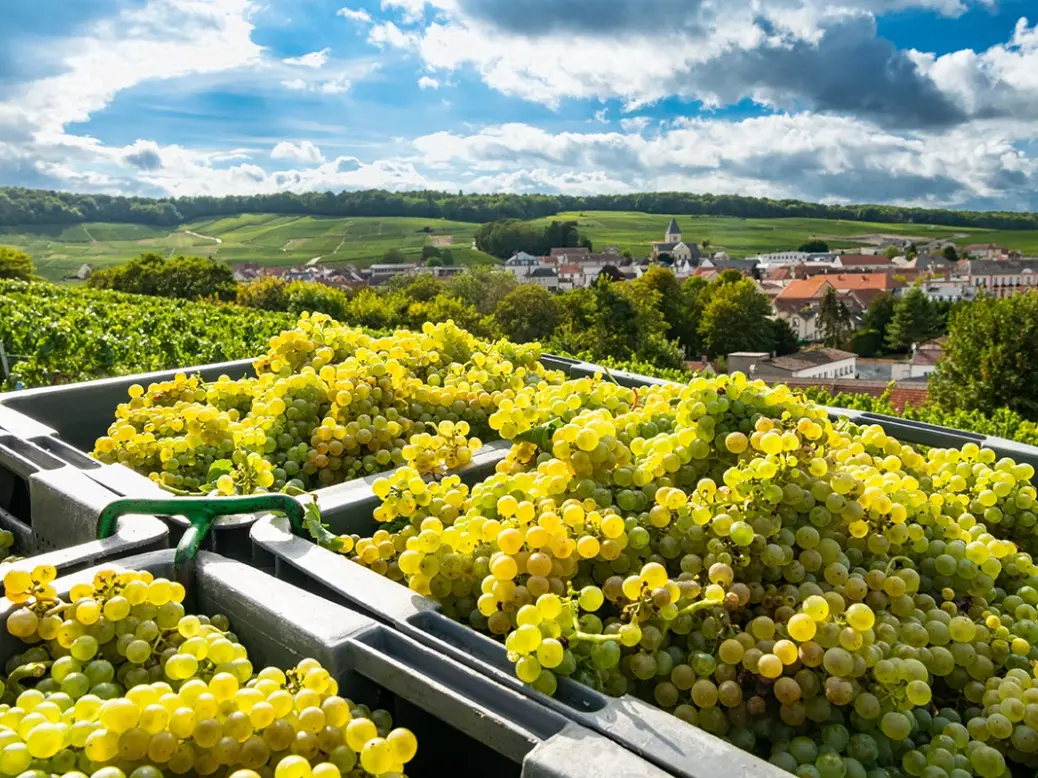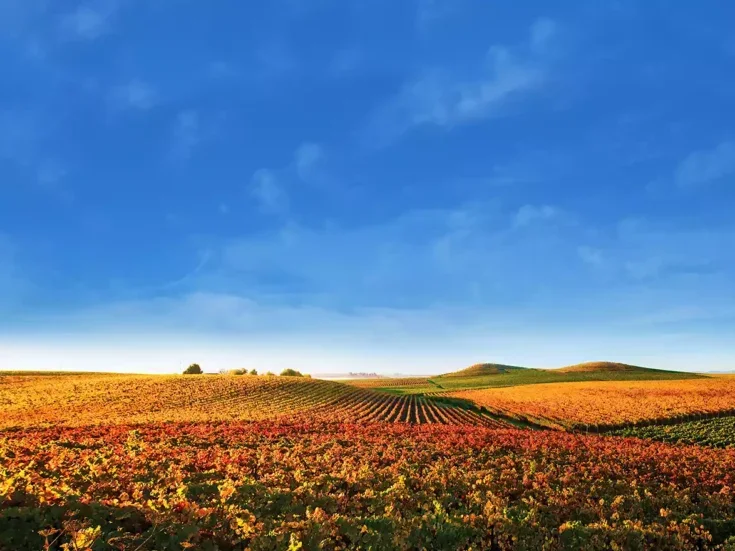
In his latest column on the strengths and weaknesses of wine appellations, David Schildknecht explores Champagne grape varieties.
The notion of appellation as designating not just a place of origin but also its typical vinous expression suggests that a given appellation can have only so long a run until cépage and methodology change. The Côte d’Or’s thousand-year continuity with Pinot Noir is unusual, as is Bordeaux’s seamless segue from dominance of Carmenère and Malbec, to Cabernet and Merlot. Regional shifts are often forceful. Phylloxera brought upheaval, resulting in a drastically reduced stock of cépages planted on rootstock. Mechanization and a new approach to vine training made for scarcely less momentous mid-20th-century upheaval, with choice of cépage hostage to technology, and regions until then dominated by field blends switching to monoculture almost overnight. Climate change will be the next disruptor.
Such vicissitudes pose a conceptual and a practical challenge to appellationists. Conceptually, their wanting to claim that, say, “Bordeaux is still Bordeaux” posits a dubious source of continuity beyond both taste and physical place of origin (see WFW 79, p.38). Practically, as norms rooted in time as well as place, appellations are inherently inertial. Not only can they outlast their welcome, but backed, as they inevitably are, by law and institutional force, they can also resist innovation.
All of that makes Champagne especially intriguing. A successful brand since the Middle Ages, through three centuries it transitioned from being a still wine to being almost entirely a sparkling one; yet Champagne was never more prized than during a long stretch when mousseux and tranquille were deemed two manifestations of a common entity, often identified by the name of a village. From Aï to Sillery, praise treated foam or its absence as irrelevant. To be sure, Pinot Noir is a common denominator across the centuries. Yet the integration of other cépages into Champagne is among the factors that make it so salutary to study under the aspect of appellation.
An unlikely hero
That Meunier—constituting one third of the area under vine—long languished with a poor reputation might be as much the cause as the result of its assignment as handmaiden in the blends of Champagne houses. The inaugural 1832 edition of André Jullien’s seminal Topographie de Tous les Vignobles Connus sorts a dozen Champagne cépages into meilleurs, médiocre, and a category reserved for Meunier alone: basse qualité. Other 19th-century sources are hardly less dismissive. André Simon still channeled this prejudice in 1961, writing of Meunier as a “poor relation” of Pinot Noir.
Had not Champagne long since become associated with blends across villages and cépages, Meunier would surely have suffered the fate of Côte d’Or Gamay: consigned to an inferior appellation. To employ a nowadays standard criterion for appellation inclusion, Meunier reflected the “typical expression” of at best certain villages, hardly of Champagne as a whole. Pinot Noir, Chardonnay, or blends of the two not only counted as embodiments of Champagne; their absence of Meunier was often deemed a mark of distinction.
That complete, complex, distinctively delicious, even shockingly monetizable wines could be achieved with monocépage Meunier had to await the early 21st-century emergence of curious and talented grower-winemakers like Christophe Baron, Alexandre Chartogne, Benoît Déhu, Francis Egly, and Jérôme Prévost. We can only be grateful that it wasn’t excluded, because absent the “Champagne” appellation, the vines themselves would likely have been condemned to obscurity and replacement.
Champagne grape varieties: Lucky accidents
Champagne’s “forgotten grapes” Pinot Blanc, Pinot Gris, Petit Meslier, and Arbanne have also enjoyed recent reputational revival—the Aubry brothers cuvée Le Nombre d’Or was seminal and engendered new plantings, including even some field blends like that at otherwise Chardonnay-only Côte des Blancs icon Agrapart. And critical praise, not rarity, explains a wine like Tarlant’s BAM! (Pinot Blanc/Arbanne/Meslier) fetching tête de cuvée prices. The quartet’s share of vine surface alone—one third of one percent—should have rendered AOC-candidacy moot; and none could be implicated in the “typical expression” of Champagne save for at Venteuil and Ville-sous-la-Ferté, where Petit Meslier and Arbanne (respectively) are legacies of specific Cistercian abbeys. Two of the four “forgotten” owe inclusion to a statute stipulating “Pinot” tout court. Of special interest today is precisely what earned Arbanne its historically bad rap: late ripening with stubbornly high acidity.
The most spectacular case of reputational reversal in Champagne is on a grander scale: vineyards in the Aube, notably the Côte des Bar and Troyes. Their inclusion in the 1936 AOC reflected memories of bloody riots and military occupation that followed a 1910 attempt at disqualification as Champagne. Since 2000, this sector has gone from subservience to négociants based in Champagne’s northern three quarters, to becoming known for innovative and intrepid grower-bottlers, among whom Cédric Bouchard, Bertrand Gautherot (Vouette & Sorbée), Jacques Lassaigne, and Dominique Moreau (Marie-Courtin) command prices rivaling those from anywhere in their appellation.
Wine lovers can give thanks for, and appellationists take lessons from, Champagne’s anomalous inclusivity, which today seems foresighted and a source of resilience. Ironically, the new respect being paid underdog grapes and places might help tasters identify something that transcends both the physical continuity of place and the discontinuity of typicity—something that perhaps makes Champagne, after centuries, “still Champagne.”






